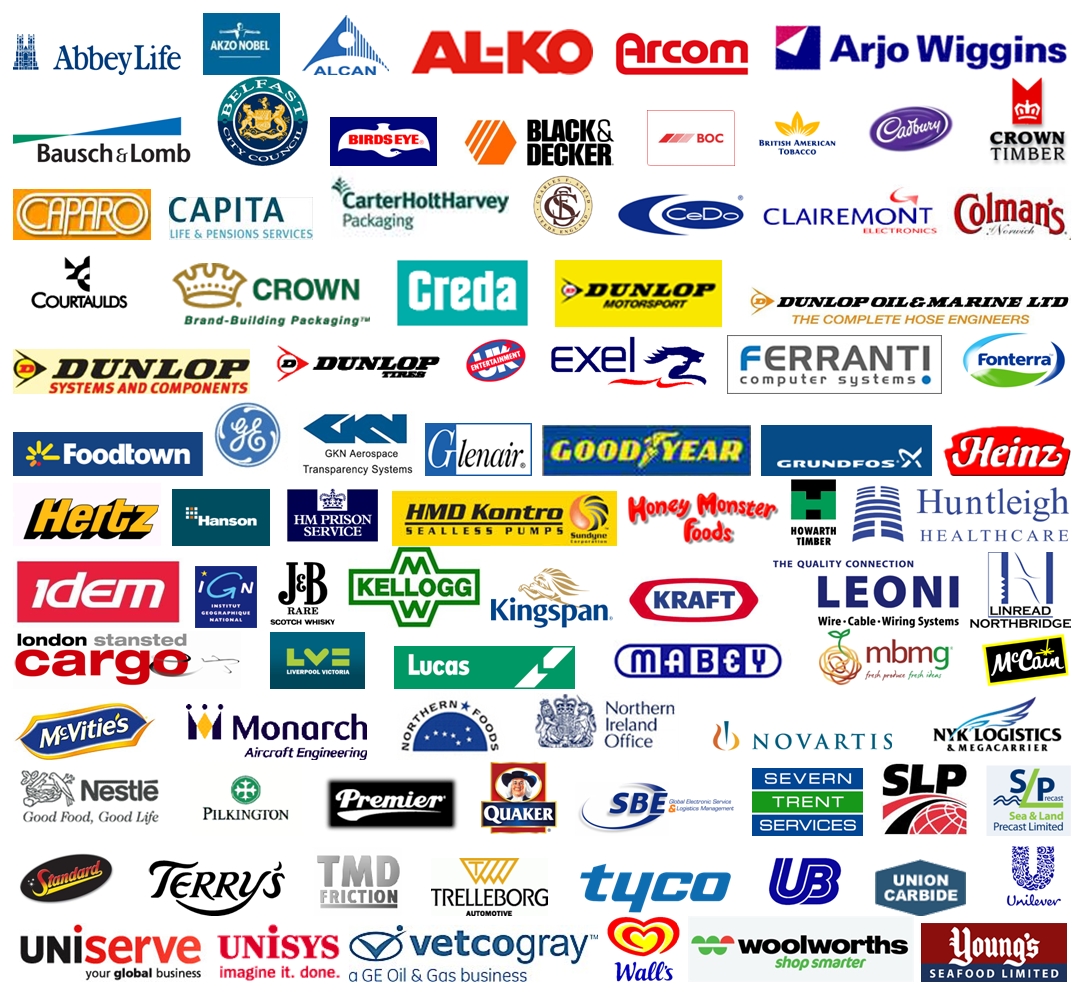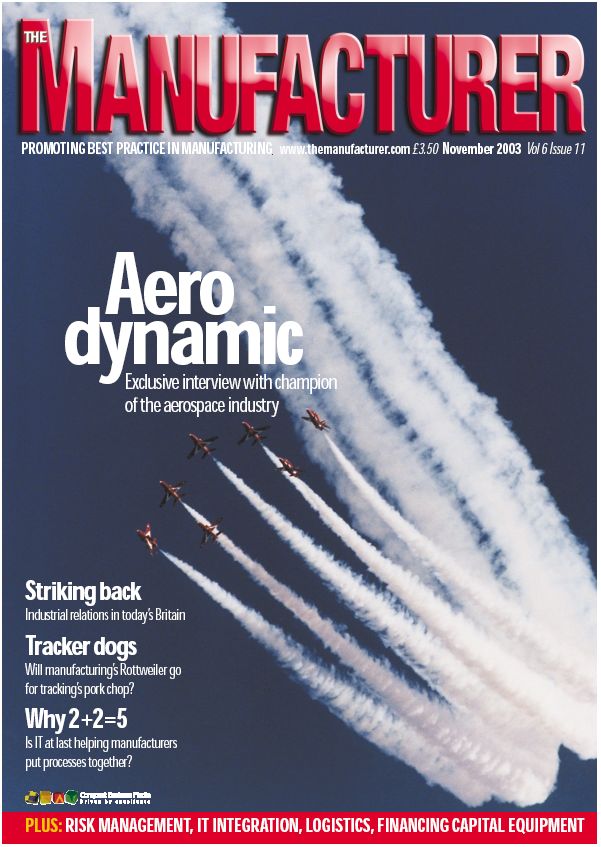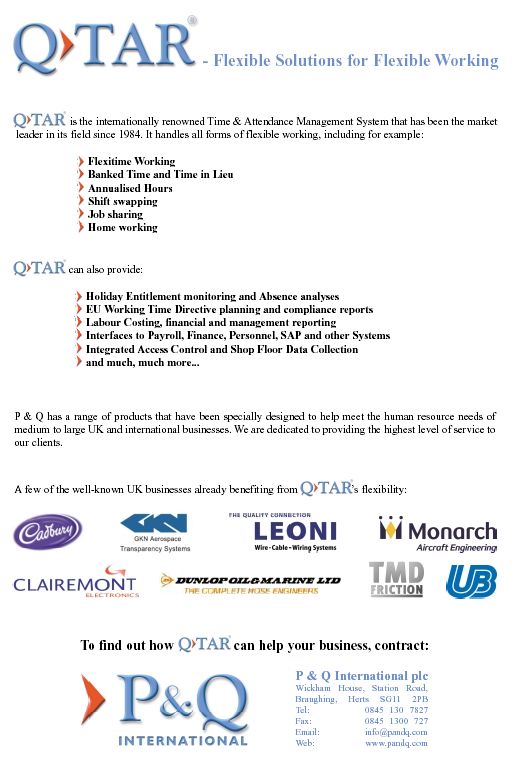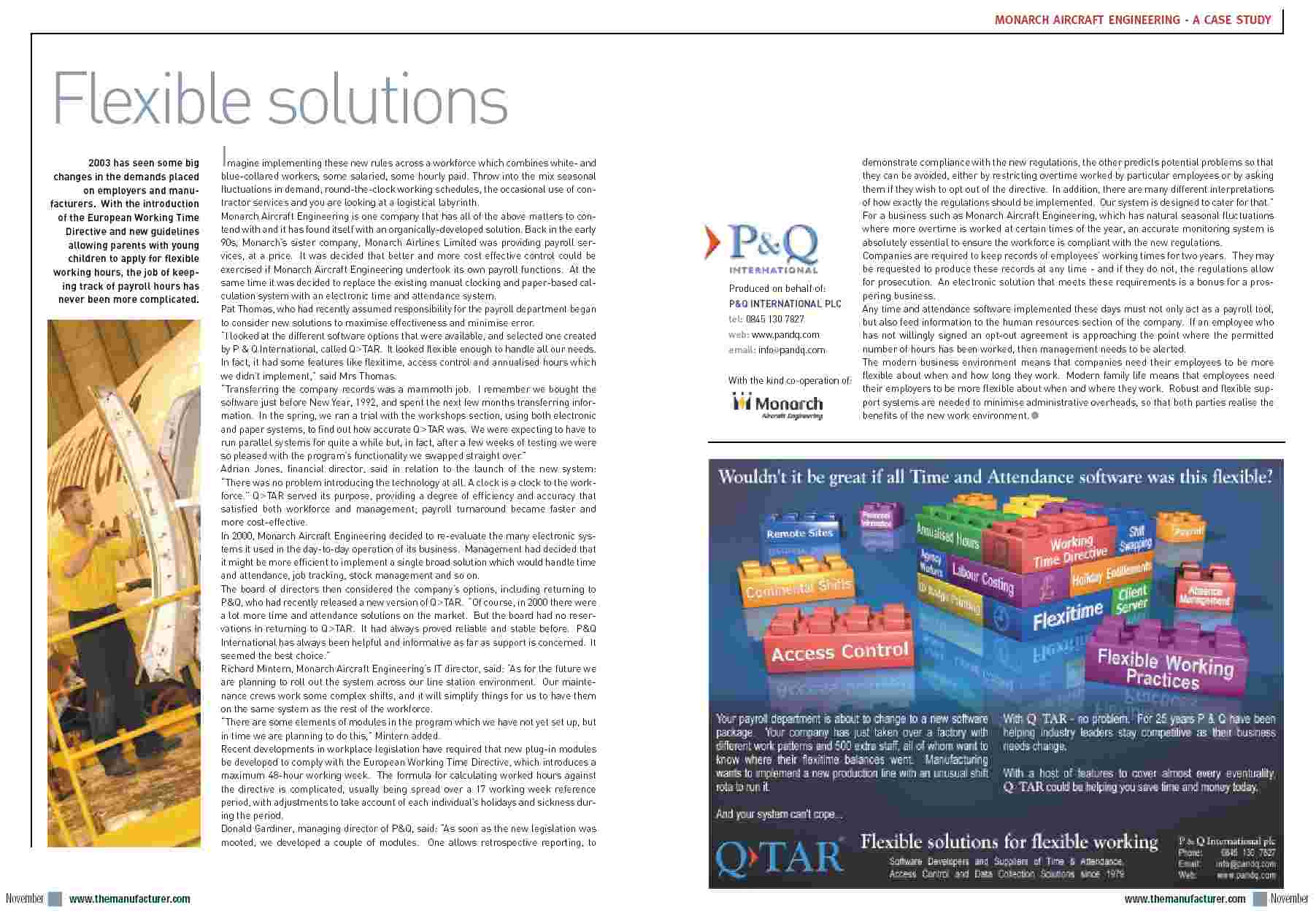Case Study – Flexible solutions for Monarch Aircraft Engineering
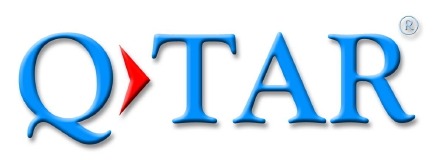
Flexible solutions at Monarch
Monarch Aircraft Engineering, like most UK companies of any size, has been affected by the recent big changes in the demands placed on employers and manufacturers. With the introduction of the European Working Time Directive and new guidelines allowing parents with young children to apply for flexible working hours, the job of keeping track of payroll hours has never been more complicated.
Imagine implementing these new rules across a workforce which combines white- and blue-collar workers, some salaried, some hourly-paid. Throw into the mix seasonal fluctuations in demand, round-the-clock working schedules, the occasional use of contractor services and you are looking at a logistical labyrinth.
Monarch Aircraft Engineering is one company that has all of the above matters to contend with and it has found itself with an organically-developed solution. Back in the early '90s, Monarch's sister company, Monarch Airlines Limited was providing payroll services, at a price. It was decided that better and more cost-effective control could be exercised if Monarch Aircraft Engineering undertook its own payroll functions. At the same time it was decided to replace the existing manual clocking and paper-based calculation system with an electronic time and attendance system.
Pat Thomas, who had recently assumed responsibility for the payroll department began to consider new solutions to maximise effectiveness and minimise error. “I looked at the different software options that were available, and selected one created by P&Q International, called QTAR. It looked flexible enough to handle all our needs. In fact, it had some features like flexitime, access control and annualised hours which we didn't implement,” said Mrs Thomas.
“Transferring the company records was a mammoth job. I remember we bought the software just before New Year, 1992, and spent the next few months transferring information. In the spring, we ran a trial with the workshops section, using both electronic and paper systems, to find out how accurate QTAR was. We were expecting to have to run parallel systems for quite a while but, in fact, after a few weeks of testing we were so pleased with the program's functionality we swapped straight over.”

Adrian Jones, financial director, said in relation to the launch of the new system: “There was no problem introducing the technology at all. A clock is a clock to the workforce.” QTAR served its purpose, providing a degree of efficiency and accuracy that satisfied both workforce and management; payroll turnaround became faster and more cost-effective.
In 2000, Monarch Aircraft Engineering decided to re-evaluate the many electronic systems it used in the day-to-day operation of its business. Management had decided that it might be more efficient to implement a single broad solution which would handle time and attendance, job tracking, stock management and so on.
The board of directors then considered the company's options, including returning to P&Q, who had recently released a new version of QTAR. “Of course, in 2000 there were a lot more time and attendance solutions on the market. But the board had no reservations in returning to QTAR. It had always proved reliable and stable before. P&Q International has always been helpful and informative as far as support is concerned. It seemed the best choice.”
Richard Mintern, Monarch Aircraft Engineering's IT director, said: “As for the future, we are planning to roll out the system across our line station environment. Our maintenance crews work some complex shifts, and it will simplify things for us to have them on the same system as the rest of the workforce.
“There are some elements of modules in the program which we have not yet set up, but in time we are planning to do this,” Mintern added.
Recent developments in workplace legislation have required that new plug-in modules be developed to comply with the European Working Time Directive, which introduced a maximum 48-hour working week. The formula for calculating worked hours against the directive is complicated, usually being spread over a 17 working-week reference period, with adjustments to take account of each individual's holidays and sickness during the period.
Donald Gardiner, managing director of P&Q, said: “As soon as the new legislation was mooted, we developed a couple of modules. One allows retrospective reporting, to demonstrate compliance with the new regulations, the other predicts potential problems so that they can be avoided, either by restricting overtime worked by particular employees or by asking them if they wish to opt out of the directive. In addition, there are many different interpretations of how exactly the regulations should be implemented. Our system is designed to cater for that.”
For a business such as Monarch Aircraft Engineering, which has natural seasonal fluctuations where more overtime is worked at certain times of the year, an accurate monitoring system is absolutely essential to ensure the workforce is compliant with the new regulations.
Companies are required to keep records of employees' working times for two years. They may be requested to produce these records at any time – and if they do not, the regulations allow for prosecution. An electronic solution that meets these requirements is a bonus for a prospering business.
Any time and attendance software implemented these days must not only act as a payroll tool, but also feed information to the human resources section of the company. If an employee who has not willingly signed an opt-out agreement is approaching the point where the permitted number of hours has been worked, then management needs to be alerted.
The modern business environment means that companies need their employees to be more flexible about when and how long they work. Modern family life means that employees need their employers to be more flexible about when and where they work. Robust and flexible support systems are needed to minimise administrative overheads, so that both parties realise the benefits of the new work environment.
Produced with the kind co-operation of:

First published in “The Manufacturer”, November 2003.





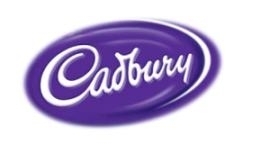









 “Dunlop Oil & Marine has been using QTAR since 1984.
We have had no trouble with the system in all that time.
Because P&Q concentrate on T&A, the system works perfectly.”
“Dunlop Oil & Marine has been using QTAR since 1984.
We have had no trouble with the system in all that time.
Because P&Q concentrate on T&A, the system works perfectly.”
